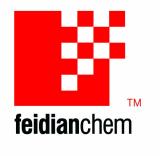FD-38 (LICA-38)
Detailed Description
FD-38 (CAS No. 103432-54-8) is a neoalkoxy titanate coupling
agent, it has a better thermostability compared to traditional monoalkoxy titanates. Its function is similar to Ken-React LICA 38 from Kenrich Petrochemicals, Inc.
Applications and Performance
Coupling Agents are molecular bridges at the interface between two substrates,usually but not limited to an inorganic filler/fiber and an organic polymer
matrix. Titanium-derived coupling agents react with free protons at the inorganic interface resulting in the formation of organic-titanium monomolecular layers on the inorganic surface. Additionally, the coupling agent
may have up to Six Functions in the matrix-which include polymer catalysis and other heteroatom effects-independent of inorganic content.
Typically, titanate-treated inorganics are hydrophobic, organophilic, and
organofunctional. Fillers may be pretreated or treated in situ absent water of
condensation and drying techniques as needed with silanes. When used in
polymers, titanates can increase adhesion; Improve impact strength and
mechanical properties; Reduce embrittlement; Allow higher filler loadings;
Optimize particulate dispersion; Increase flow of filled and unfilled polymers
at lower process temperatures; Prevent phase separation; And may have other
effects.
Reactive Substrates
Proton reactivity allows coupling to almost all inorganic and organic substrates such
as CaCO3, carbonates, carbon black, graphite, minerals, nano-particulates,
silicas, silicates, metals, metal oxides, peroxides, hydrates, acetates,
borates, sulfates, nitrates, nitramines, aramid, organic pigments, cellulosics,
sulfur, azodicarbonamide, polymers, etc.


 steel_wong@hotmail.com
steel_wong@hotmail.com

